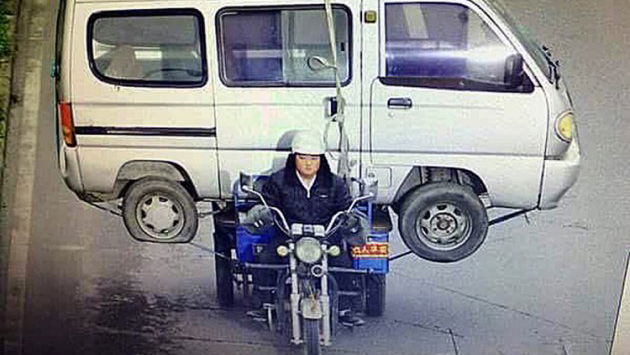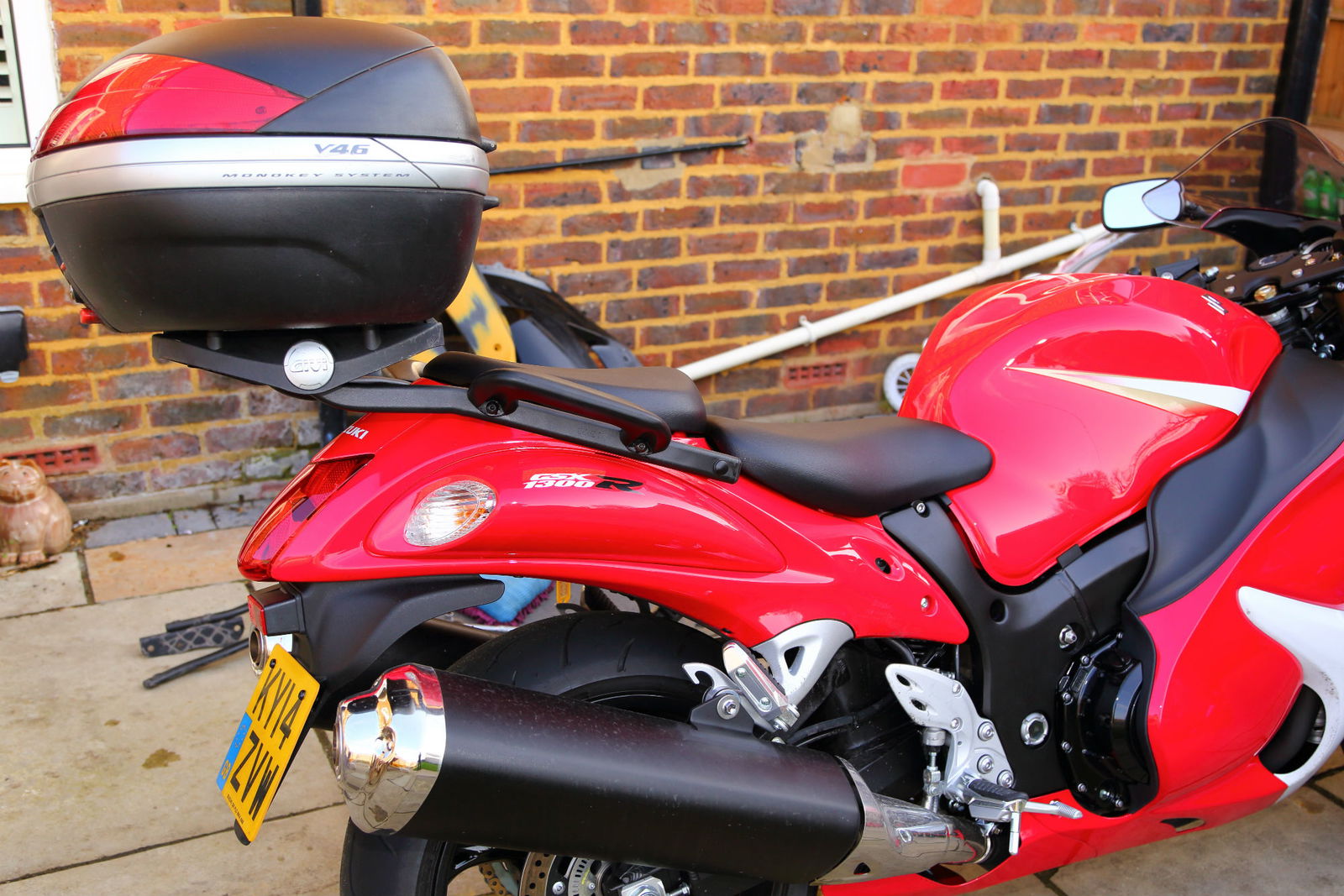How to… load a motorcycle into a van
Without ending up in one of those ‘loading fail’ videos

By Alan Dowds
WITH the inflexible state of British laws on insurance, taxation and MOTs, the need to put a bike in a van is greater than ever. If you’re buying a bike second-hand, hiring a van and collecting it is often much less grief than sorting insurance and the rest while sitting in someone’s front room. Add in taking bikes to track days and picking up broken-down ones, and you can see why strapping a bike into a Sprinter is a useful skill to have.
The basics are simple enough: you need a van that’s big enough to take the bike, a ramp to help get it in, and some method of securing it in place. But there’s always plenty of scope to f**k it up, as the video below demonstrates. Following our tips on the following pages to avoid being one of them (and for more funny loading fail videos).
Which van, man?
Depends on the bike of course: a Honda Melody will need less space than a Gold Wing, obviously. But you’ll need something with enough length to take the bike with the doors shut, plus enough height for any tall screen. That’s often overlooked: with a tall screen, even a sports bike needs a fair amount of headroom to get through a van door. Trail bikes even more so. The gold standard is a high-roof Transit or Sprinter – but you can fit big bikes in vans as small as a Mercedes Vito with practice (and maybe the removal of mirrors and windscreen).
Ramp ahead
Getting the bike up and in generally means using a ramp. The wider and longer the better, but you have the headache of storing it when not in use. Folding aluminium ramps are a decent compromise of weight, length and durability. Watch out - some short ramps don’t offer enough clearance when the bike goes over the lip of the load space – if this is the case, put some wood or paving slabs under the ramp on the floor, to reduce the angle of attack. Some ramps are curved to help avoid this.
If you’re doing a lot of this, you can get permanently-installed ramps which bolt onto the floor at the back of the load space.
Ratcheting up the pressure
Most vans come with standard loops in the floor to secure loads with. Consider adding some extra ones if the stock points aren’t convenient: you can get ones that screw and bolt into the floor. Ideally you’d have three at the front and back and two in the middle.
It’s worth spending some money on straps. Worth spending some cash here – better straps have tougher ratchet mechanisms and are easier to release. There are two main types: ratchet straps with a built-in tightening mechanism, and one-way buckle straps, which you tighten manually by pulling the free end. The ratchet ones are best for pulling a bike down hard against its suspension, and the buckle straps are best used for ‘auxiliary’ securing.
Assume the position
Get the bike in, on the side stand, and jam the front tyre against the bulkhead (or driver’s seat mountings if no bulkhead). Leave it in gear, turn the steering and put the lock on – it adds some security against theft and stops the bars turning and loosening the strapping. Lift the bike off the side-stand, and put a rag or piece of foam (or half a tennis ball) over the bar end nearest the van wall, then lean the bike against the wall, making sure you’re not going to touch it with a lever end or indicator or bodywork. Check clearance for the exhaust at the back too.
Tie me kangaroo down
Get one (or two if you can) ratchet straps onto the front end, above the forks. The frame is a good idea, around the steering head. Alternatively use the handlebars or bottom yokes. Make sure you’re not going to break anything fragile when the strap tightens (lots of bikes have delicate sensors nowaways). Pull the end of the strap tight through the ratchet, and start to tighten down. Not too much just now, just enough to start to compress the forks.
Go to the back of the bike, and secure a strap between the tie-down point and a solid part of the bike above the shock. Rear grab rails, luggage racks and pillion peg brackets are good here. Tighten the strap a little till the rear end compresses.
If you have a centre tie-down point, add another strap here, possibly using a buckle strap to the rider’s foot-peg bracket or frame.
Tighten all three straps progressively, until the bike is jammed solidly against the van wall and the suspension is compressed down. Wrap a strap or bungee round the front brake lever, then test how secure it all is by trying to rock the bike back and forth. If it’s really solid, you’re done!
It’s worth checking after a few miles to make sure nothing is moving – and listen out for straps snapping or any unusual noises when you’re on the move.

